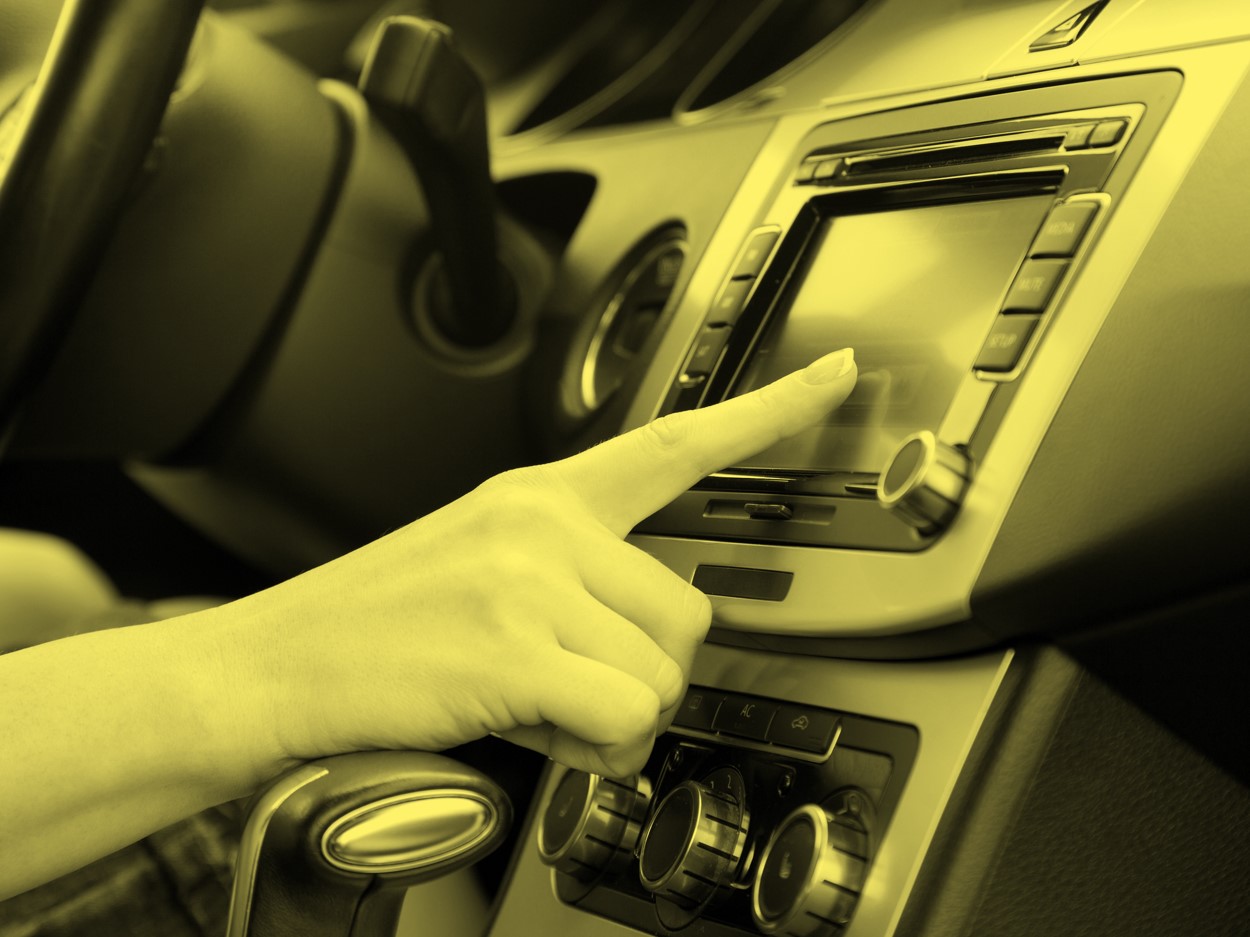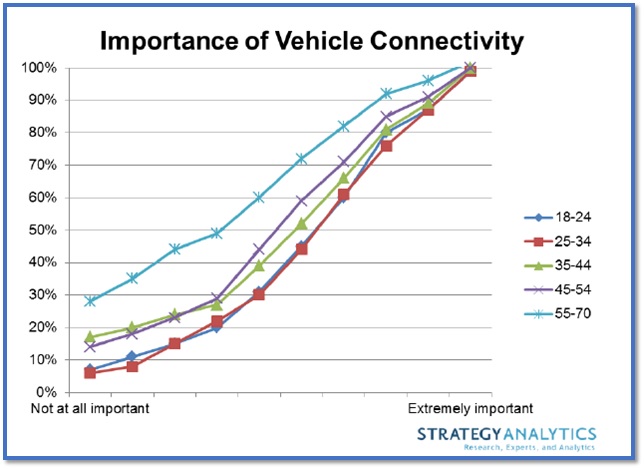 The last decade has been an important one for the auto industry. And we’re not just talking about the recession that nearly put General Motors and Chrysler out of business.
The last decade has been an important one for the auto industry. And we’re not just talking about the recession that nearly put General Motors and Chrysler out of business.
Consider that just ten years ago, it would have been illogical to see automakers at an event like CES. After all, what did cars have to do with the consumer electronics industry, the realm of brands like Microsoft, Intel, and Samsung?
But as technology began to transform the dashboard, the landscape of media and entertainment in cars changed with it. Ford’s SYNC platform was the early pioneer in the space, preceded by GM’s On-Star, which back in the day was an emergency services tool. You contacted On-Star when you were locked out of your car. You punched up SYNC when you paired your phone or started using embedded apps on your touchscreen.
The Ford SYNC system in the early years was rugged, eventually paving the way for smoother, more intuitive driver experiences. SYNC’s voice command system was crude, often frustrating consumers. At the NAB Radio Show a few years back, Strategy Analytics’ Roger Lanctot played a video of a first-time SYNC user struggling to perform a simple voice command task: tuning in a radio station. As someone who bought a Ford with one of the early SYNC systems, I could relate.
It hurt Ford in those all-important J.D. Power ratings. Dashboard complaints brought Ford’s numbers down year after year. As many in the automotive industry quietly noted, “Ford took one for the team.” By being first in the space, they paid the price, while helping other automakers – OEMs – figure out the space.
At last week’s NABA Symposium in Washington, D.C., Roger was once again on stage, playing updated videos showing an improved dashboard user experience, but still pointing out some of the same nagging interface problems that persist.
And to put a point on that, there’s a new “Mayhem” commercial for Allstate that makes the “connected car” look like technology that could kill us at the next intersection. For automakers, this is their worst nightmare.
https://m.youtube.com/watch?list=PLuJ9jidSCLvDzt6Kto_RSUIWzlKi3V3oI&v=ksPRXokdKyo
But the reality is that the dashboard user experience – or UX – is gradually changing for the better. Ford has led the way with SYNC 3, a simplified, intuitive interface with clear labels that even the most technophobe drivers can handle. And I’ve noticed in car rentals over the past year or so, the interface is generally more intuitive. In many cases, it’s become easy to pair my phone, tune in my client station (and the competition), and preset them all before I leave the rent-a-car lot.
At that same NABA Symposium, Audi’s Manager of Connected Vehicles, Anupam (Pom) Malhotra, told the audience, “I want to give my customer all the options in an easy to use interface. Listen to what you want when you want.” And more and more, that’s what consumers are demanding.
As the Allstate commercial suggests, part of the safety issue in new cars revolves around touch screen distraction. But as Pom reminded the room, whether you’re a fan of knobs or not, carmakers are fixated on Millennials – young consumers who have grown up with touch screens – and no buttons.
And he listed the four biggest trends in the auto industry, and they all have implications for radio:
- Connectivity
- Electrification
- Shared mobility
- Automation
Roger’s company, Strategy Analytics, has documented the importance of that trend at the top of his list – connectivity – whether it creates mayhem or not:

It’s fascinating that just about everyone values automotive connectivity – but at what price?
Creating a safer and less frustrating experience has truly been the focus of every automaker, as well as Tier 1 companies like Panasonic, Pioneer, and Visteon – all of whom we spent time with at CES.
Roger’s take on the dashboard experience is that “it’s getting better, easier – while simultaneously more complex…It’s a vast experiment with some small successes here and there.”
His colleague, Chris Schreiner, director of User Experience Practice, also notes that it’s often one step forward and one step back:

“Yes, it is getting better…but as always there is still a way to go. It’s always an internal struggle within OEMs between those that understand how to optimize the consumer experience and those that favor style and visual design.”
And as for dashboard danger, Roger offers up a different way to think about the interface:
“Glance time is the new metric. The old-fashioned radio gave you no reason to glance – that is the benchmark.”
Mayhem indeed.
Thanks to Chuck DuCoty for the heads up on the “Mayhem” spot.
- What Is It With Female Robot DJs? - April 30, 2025
- Why “Dance With Those Who Brung You” Should Be Radio’s Operating Philosophy In 2025 - April 29, 2025
- The Exponential Value of Nurturing Radio Superfans - April 28, 2025




Just please make sure turning into essential information on the car radio doesn’t become as dangerous as texting, behind the wheel! Thanks! http://www.broadcastideas.com
Thanks for that thought, Clark.
Strategy Analytics’ Roger Lanctot states……“Glance time is the new metric. The old-fashioned radio gave you no reason to glance – that is the benchmark.”
This scares me. Do we really think that a short “glance” is now acceptable? Ask yourself….have you ever glanced over to your dash/phone/screen for just a tiny bit too long? Do you ever see other drivers not looking at the road? Do you want to tell the family of a person killed in a car accident that “you were just glancing for a few seconds?”
Let’s all focus on the user-interface, to make any and all changes to the dash no more distracting than the old buttons and knobs. Period.
Marshall, I think Roger was making the point that any “glance time” is problematic. And the car radio requires none of it. That’s pretty compelling. Appreciate you weighing in.
I think they have a long way to go – given the amount of money/time that have been spent on the center stack/connected car, we should be further along. Some observations:
There is no way that driving isn’t less safe, no matter how you execute. To that end, the Germans should abandon the touchpad – a touchscreen on the dashboard is a whole lot safer than a touchpad that you have to look down to see.
The easiest thing to do would be to replicate the phone screen on a touchscreen in the dashboard. Whether Google/Apple or the auto makers do it, that’s easy, intuitive and gives most consumers what they want in a format they can understand and embrace. After all if the billions that have been spent, it seems to me we should be there by now.
There is an almost unbelievable variance in the quality of voice recognition from car to car. My ten year old Infiniti recognized easily 95% of my commands – so why do some 2017 cars still have trouble with VR? Voice commands are the safest – “play WCSX” or “play Pink Floyd The Wall Spotify” should be easy and standard by now.
The auto industry seems to fully understand the value prop of the connected car, have dedicated a lot of resources but still don’t seem to have been able to coax the genie out of the bottle. Curios IMO.
As Roger noted, your experience may vary. He showed a new series of videos at NABA that ran the gamut: smooth, seamless experiences where the vehicle did what it was supposed to do, and clunky voice commands that ruin the experience. This is where Apple and Google (Alphabet) are trying to make inroads. The lack of standardization, coupled with a total rainbow of experiences (good and bad) open the door for tech companies to invade the space. And that’s a big part of what we’re seeing. Thanks for the comment.